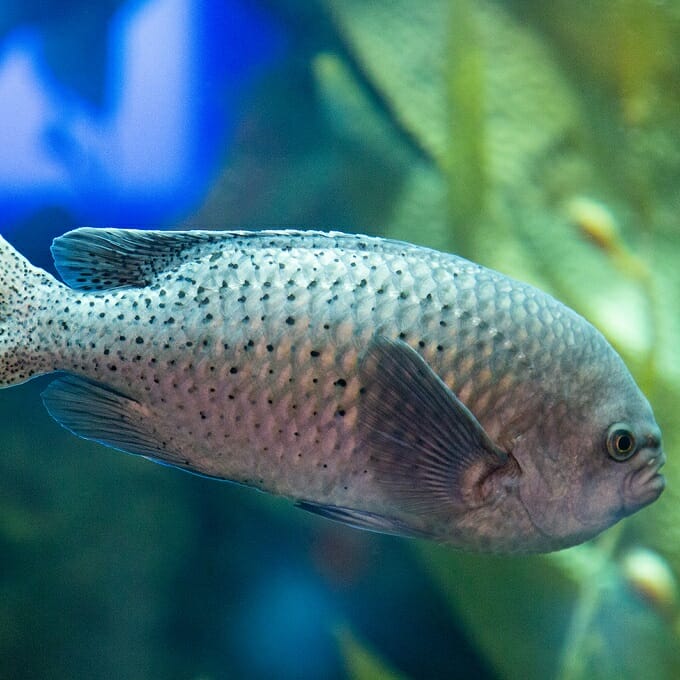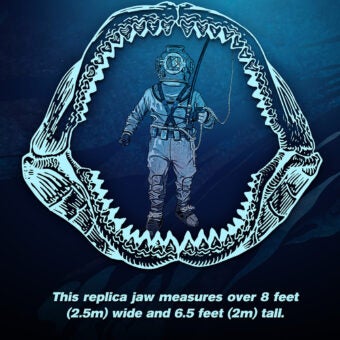-
Size
10 inches (25 cm) -
Diet
Zooplankton -
Range
Eastern Pacific Ocean -
Habitat
Near shore waters, around reefs and kelp beds
Physical Characteristics
- The blacksmith’s body is gray-blue on the sides with black spots toward the rear.
- A male guarding its nest is very light-colored, almost white, with a dark bar through each eye.
- Juveniles are blue-gray in the front of the body and brassy orange at the rear.
- Can reach up to 10 inches (25 cm) in length.
Animal Fun Fact
During the day, large schools with hundreds of individual blacksmith fish can be found over most reefs.
Diet / Feeding
- Adult blacksmith feeds in mid-water during the day on zooplankton, such as copepods, crustacean eggs and larvae.
- Young obtains some of its food by “cleaning” or picking parasites from other fish.
Range / Habitat
- Occurs in the Eastern Pacific from Monterey Bay to Central Baja California.
- This is a very abundant mid-water fish that is found over structures (such as rocky reefs and oil platforms) in near-shore waters, around reefs and kelp beds.
- Can be found at depths from near-surface to about 150 feet (46 m).
Reproduction & Growth
- During the breeding season, the male cleans a nest site (under overhangs or in small caves in rocky reefs) and guards the eggs until they hatch.
Conservation Status
- “Least Concern” on the IUCN Red List.
Additional Information
- Blacksmiths are major “customers” of cleaner fish, especially females.
- During the day, large schools with hundreds of individuals can be found over most reefs.
- Adults tend to hang out at the incurrent side of the reefs, waiting for zooplankton, while the young are usually found near the bottom, close to places of refuge.
- At night, most blacksmiths find shelter in crevices or on the sand near the crevices. It is a gregarious species: many individuals will gather in a small cave.
Sources
- www.fishbase.net
- Probably More Than You Want to Know About the Fishes of the Pacific Coast. Love, M., pgs. 278 – 279
- Pacific Coast Inshore Fishes. Gotshall, D. W., pg. 85







